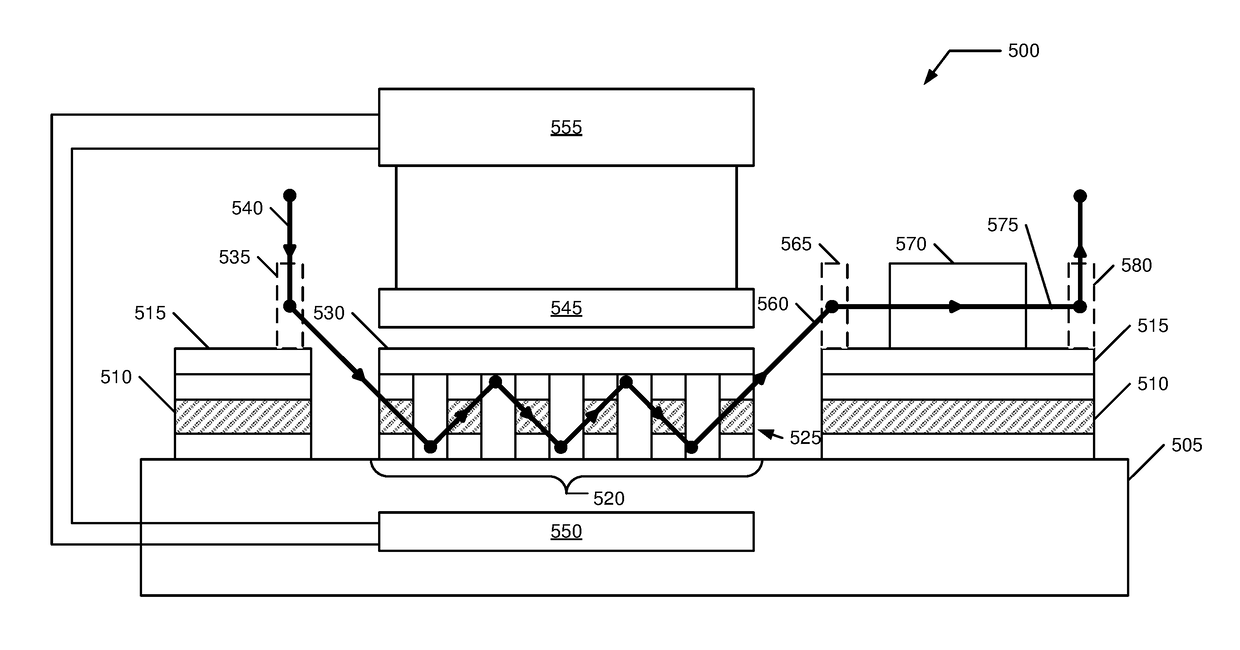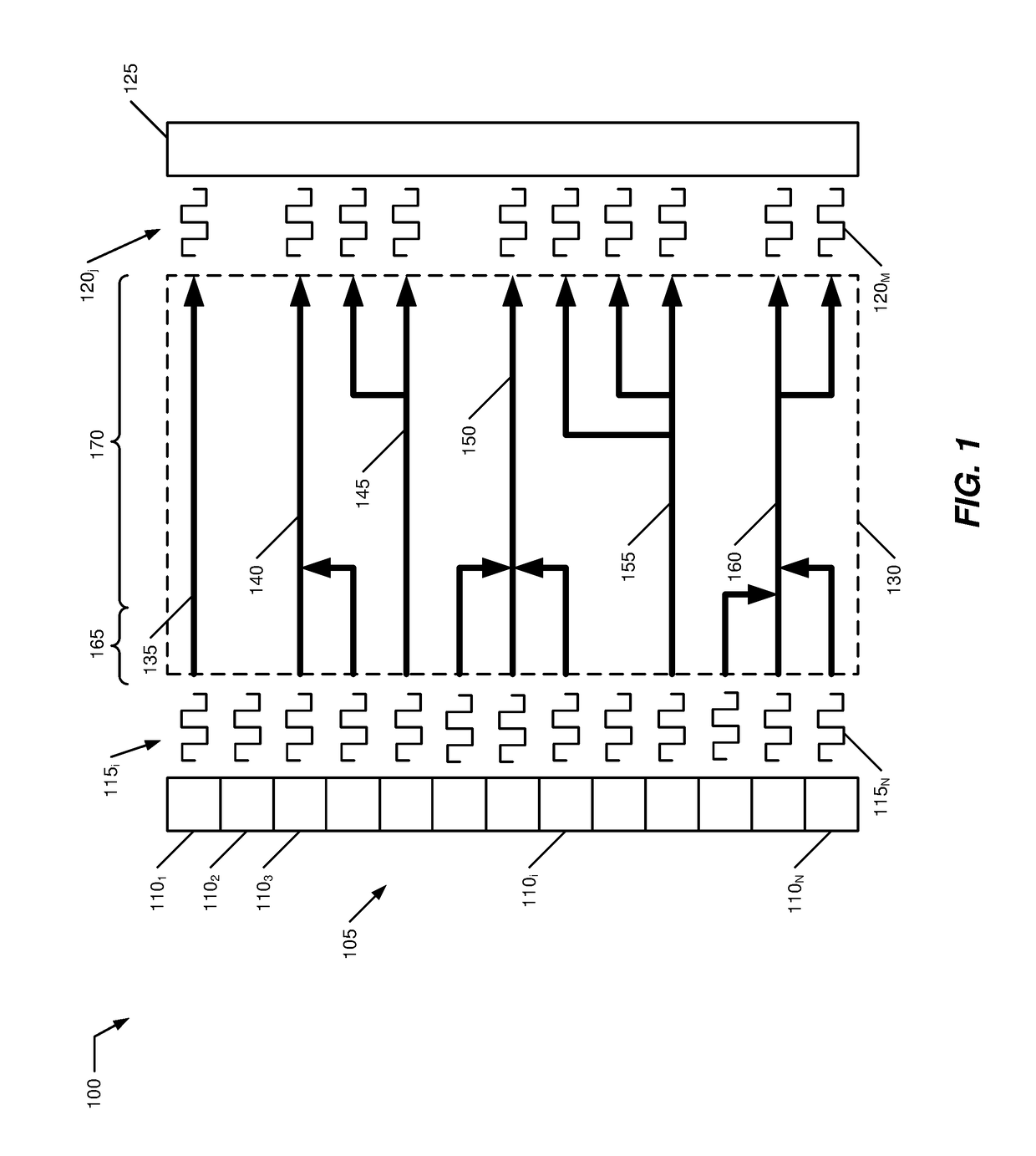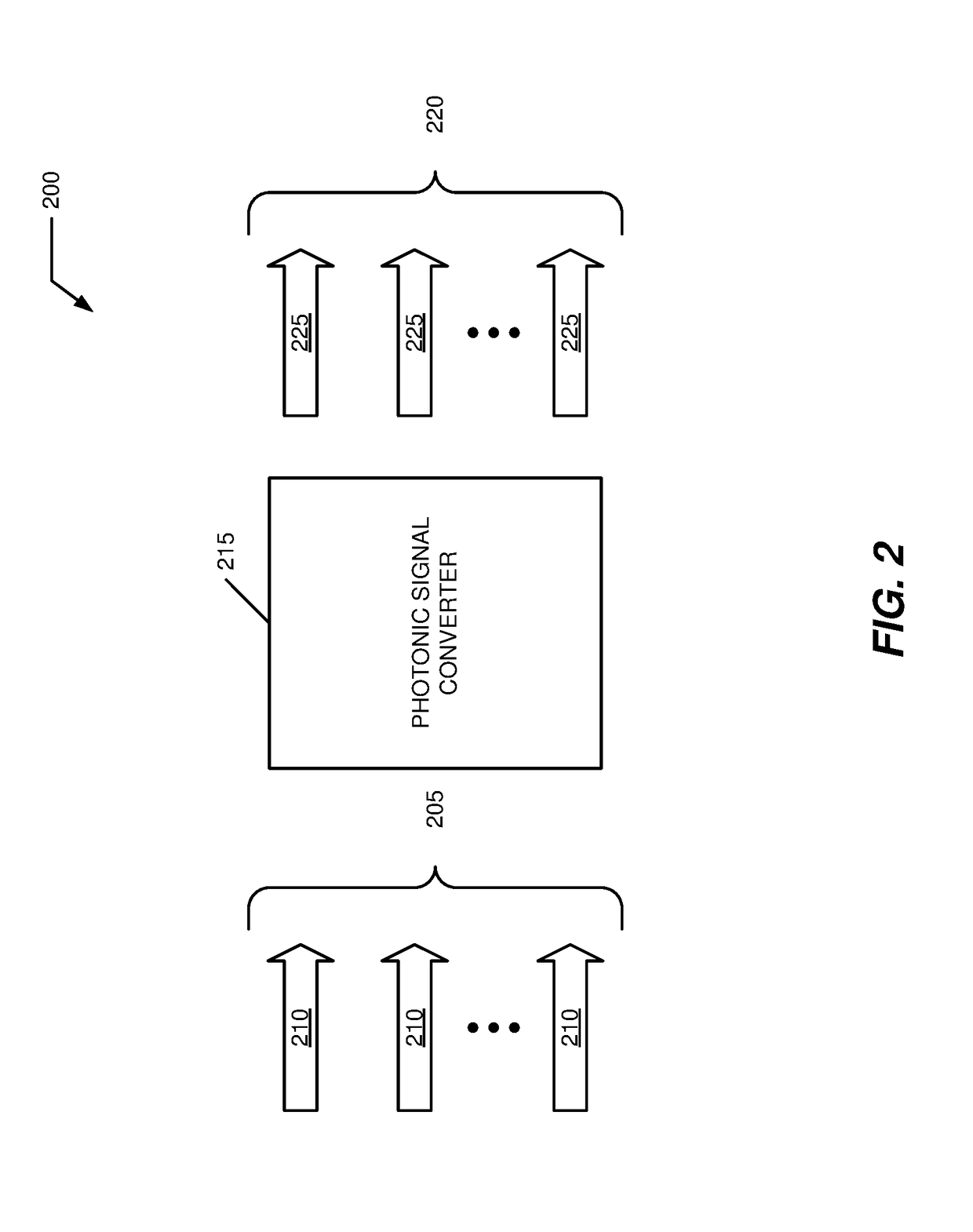In the field of
image display and projection devices, including
liquid crystal displays (LCD),
gas plasma display panels (PDP's), organic light-emitting
diode (
OLED), DMD (digital micro-mirror devices), and
cathode ray tube (CRT), among the leading and most successful technologies, artificial limitations exist today which prevent the further development of many performance and value criteria and desirable new display features for devices based on these (or any) core modulation technologies.
A major artificial limitation on the further development of any display or projection modulation technology is the tendency to conceive of any display technology as identical to the modulation technology employed to change the fundamental state of pixel or sub-pixel “on” (lighted) or “off” (dark).
Flexibility of the display structure is also desirable for many applications, and there are limitations on options to achieve this when there is an assumption of one integrated modulator device per sub-pixel.
After this review and consideration of the problems and solutions that have been developed up to this point, it will also become apparent what limitations still exist to further progress caused by a “mono-technology” approach to this category of display
system.
Starting in the 1960's, the first three decades (approximately) of attempts to achieve a practical
magneto-optic display saw many initial problems confronted, with some addressed partially at least, but no achievement of a practical display employing a light-valve based on a magneto-optic effect.
Without knowing anything about the optical or magnetic problems with the Litton designs, it is obvious that the strategy of increasing B field and domain switching efficiency by using the surface of the
crystal surrounding the relative “core” for a superficial winding structure would negatively
impact display performance by increasing fill-factor.
In addition, this strategy did not address and actually would exacerbate the problem of magnetic cross-talk between subpixels.
Because of the employment of continuous bulk MO films as the deposition surface for field-generating “squiggles,” the increase in B field without any structure and / or materials strategy to isolate each sub-pixel from the other will result in increased cross-talk and thus a degradation of the contrast and in fact the basic operation of the array as a display.
Magnetic cross-talk is a problem in the Litton design because adjacent sub-pixels are partially or almost fully switched; from the point of view of the viewer of the display, the array becomes a smudged blur.
Optical cross-talk was another fundamental problem of the Litton approach, as it had also been for earlier attempts.
The thicker the films, which were required by all prior designs to realize (through increase of the path-length variable 1 of the classical
Faraday effect equation) increased Faraday rotation in the quest for power reduction and switching efficiency, the greater this problem.
Lacking practical
beam control and
insertion for arrays, and even more problematic, lack of control of the propagation of rays through the MO material (including both forward propagating rays as well as management of any reflected rays), is more and more of a problem as the safe cone of
insertion becomes narrower and narrower the thicker the film for rays that either continue at the edge of a cone angle of
insertion with respect to the film surface or, worse, refract and bend and thus depart the pixel /
active zone and pass through the fill between pixels and into other pixels.
It should be noted that while planar (or “superficial”) waveguides, especially
rib waveguides, had been employed in the fabrication of planar Faraday-effect devices for telecom and other non-display applications for many years, there had been no solution or proposals for using such planar devices for the purposes of any kind of display array to in-couple or out-couple the light required for the input illumination or output sub-pixel or pixel.
And these planar devices, even as Faraday-effect devices per se, had limitations of their own, including feature size, lack of sufficient or any real integration of the device (including all the features and
active components required for a Faraday-effect-based
light valve), and absence of all of the features and techniques possible for improving the performance of the device, whether implemented discretely or integrated.
1. High power requirements, as usually associated with conventional understanding of Faraday-effect based devices from that era.
2. Continuous addressing of each pixel required by the
system substantially contributed to the unnecessarily high power requirements.
3. Contributing to this was the quality of bulk magneto-optic films available or developed, with Verdet constants too low for practical display applications, at least not without major advancements and solutions addressing all other possible aspects of a Faraday-effect-based
light valve, array of such, and display (or SLM) of such.
4. The lower the
Verdet constant, the greater the reliance on thicker films.
5. Thicker films become more difficult to saturate and permeate with the imposed B field from a
coil structure fabricated on the top surface of the film and array.
6. Magnetic cross talk, which is made worse the thicker the films employed.
7. Optical cross talk, which is made worse the thicker the films employed.
8. Unacceptable fill-factor due to the employment of surface-area
hogging superficial “squiggle” coil-structures to address the problem of managing
current amplitude. The unacceptable fill-factor between pixels creates the “venetian blind” effect of visible pixel gaps, which substantially degrades the human visual systems
perception of an array of pixels as a single, integrated image.
9. No color display solution. In bulk MO films, no MO films had been proposed or fabricated which could both transmit sufficient green and especially
blue light while also generating sufficient Faraday rotation to implement a native MO blue or green pixel light-valve. And no other solutions, either employing something other than bulk MO films or native MO switching of blue or
green light, had been proposed or fabricated. The best performing iron garnet materials of the time, such as Bi-substituted YIG, perform optimally in near-
infrared or
infrared, and well in red. But very, very poorly and inefficiently for
green light, and essentially nothing (vanishingly small) for blue. This is generally due to the absorption of the shorter wavelengths, especially blue, by the iron or
iron oxide in the compositions.
No display-size scaling solution for displays larger than those possible with small, high-quality MO films restricted to the size of quality films that could be fabricated.
No practical resolution-scaling solution for displays of resolution beyond very small resolutions.
This was due to the power requirements and the problems of
magnetic domain-management of each sub-pixel in series.
And, with the exception of the color requirement, all of these problems also applied to non-display applications of magneto-optic device arrays, such as SLM's for telecom.
Limited, at best to: small displays or SLM's of up to perhaps 32×32 or 16×16 resolution, displaying at best crude red (pixel) images, and extremely power-inefficient—to such a degree that even for applications that might have benefited from the most obvious reason to pursue a magneto-optic based display non did.
Because of the potential—inherent in the demonstrated commercial application, over decades, of Faraday-effect based modulators, rotators, and isolators for telecom and
sensing applications—to realize extremely high speed switching—i.e., for displays, that means very, very high frame rates—unbeatably high.
While there were other valuable attributes of this device solution for the SLM application, on its own that major
design improvement over Litton did not address the many other problems of realizing a practical MO-based display.
However, it is the contention of the present disclosure that there are none-the-less further significant improvements possible for MO and MPC related devices, especially configured in arrays both for display and non-display applications (on-
chip or spatially-separated).
 Login to View More
Login to View More  Login to View More
Login to View More 


